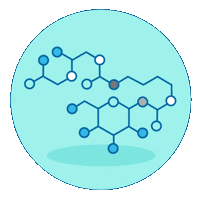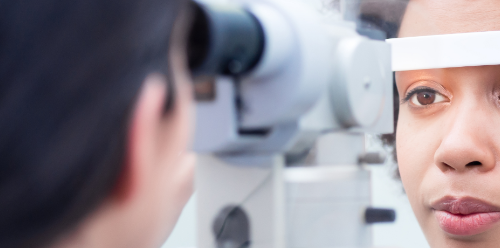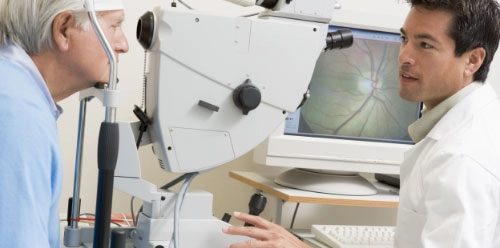Dry Eye Disease
How AAGP® could help break through current treatment barriers
According to the Mayo Clinic, dry eye disease occurs when our bodies cannot produce enough tears to adequately lubricate our eyes. This can result in discomfort, itching, stinging, burning and even vision problems.
Based on a 2017 report on the prevalence of dry eye disease, this common condition affects approximately 6.8% of the US adult population (or 16.4 million people). Women are nearly twice as affected as men, and prevalence tends to increase with age.

The causes of dry eye disease
There is no single cause for dry eye disease. Any inflammation of the tear glands or tear ducts could lead to impaired tear production and discomfort. Common factors that may result in dry eye disease include stress from air pollution, genetics, the effects of aging and damage caused by chronic conditions, such as Type 1 diabetes, arthritis and menopause.
The symptoms of dry eye disease
While the causes of dry eye disease are diverse, the symptoms are generally the same. Often, individuals suffering from dry eye disease may experience:
- Blurry vision
- Difficulty driving at night
- Discomfort while wearing contacts
- Irritation and redness
- Itching, stinging, burning or soreness
- Light sensitivity
- Mucus in or around the eye
Treatments for dry eye disease
Current dry eye disease treatments target the symptoms of dry eye disease – the dryness and discomfort – by replicating the effects of tears and replacing moisture in the eyes. Unfortunately, this is a temporary solution, and those who use tear replacement methods typically need to do so indefinitely. Over time, heavy eye drop use may even exacerbate the symptoms of dry eye disease.

AAGP® as a potential solution
With AAGP®, our proprietary anti-aging glycopeptide , ProtoKinetix researchers are investigating ways in which cell preservation can be utilized to help with tear production, addressing the causes of dry disease. We are in the process of formulating our own prescription and over-the counter eye drops that would not only provide temporary moisture to the eye but also help target and reverse cell damage in the tear ducts and glands.
ProtoKinetix research and clinical trials
Initial formulations of these ProtoKinetix eye drops are complete, and pre-clinical trials are underway with plans for a phase-1 trials soon, with extremely promising results thus far. Read our recent press releases to see where our research is at today and what’s coming next:
Market potential for dry eye disease
While our research progress has been extremely positive, we need the support of dedicated investors to get our eye drop solution to market. According to research from Market Scope, global revenues for dry eye treatments are expected to increase from $4.6 billion in 2018 to $6.2 billion in 2023, due in part to the increasing elderly population and awareness of dry eye disease treatments. The opportunity is immense, and we hope you’ll join us on this exciting journey.
2018 Market Revenuet:
$4.6 Billion

2023 Market Forecast:
$6.2 Billion
Applications of AAGP® in Ophthalmology

In addition to other complications, diabetes can adversely affect the eyes by causing diabetic retinopathy, or damage and deterioration of the blood vessels in the retina. In fact, diabetic retinopathy is the number one cause of blindness in young adults, according to the American Academy of Family Physicians.

According to the National Eye Institute, age-related macular degeneration (AMD) is a disease often occurring in older people, involving damage to the macula (the focal center of the eye responsible for “20/20” color vision), which can affect the central vision required for daily activities, such as reading, cooking and driving.

Sjogren’s syndrome is an autoimmune condition in which a body’s own immune system attacks the cells in the moisture-producing salivary glands and tear ducts. The outcome of this autoimmune response is painfully dry eyes and mouth.

Uveitis is an inflammation of the uvea, or eye wall—the middle layer of tissue of the eye. Whereas conjunctivitis affects the outer layer of the eye, uveitis affects the interior of the eye in the front, middle, or back of the organ.

Research Pipeline for Ophthalmology:
Research:
Development:
We are in stage-3 of our pre-clinical retinal replacement program. The Gregory-Evans Retinal Therapeutic Lab at The University of British Columbia is testing whether AAGP® treated cells continue to develop into retinal cells. If successful, this could lead to the restoration of vision in humans. For example, retinal cell replacement therapy could become a critical approach for the treatment of retinal diseases including Age-Related Macular Degeneration (AMD).
Research:
Development:
Dry eye disease afflicts more than 30 million people in America and 430 million people around the world. We’re going to look into the effects of AAGP® on ocular inflammation when applied topically. With this biotechnology, we’re hoping to improve the quality of tears that lubricate and nourish the eye. This will help the hundreds of millions of people affected by this chronic issue.
Veterinary treatments
Research:
Development:
It’s possible that you don’t suffer from dry eye or other eye conditions, but your pets do. We plan on researching AAGP® in veterinary treatments. As we move through the discovery phase, we’ll narrow down our line of exploration to find out how we can improve ophthalmology care in animals.
Explore other Industry applications for AAGP®
Support our dry eye disease research while you support your financial future. Contact your broker or reach out to the team at ProtoKinetix to learn about potential investment options.


